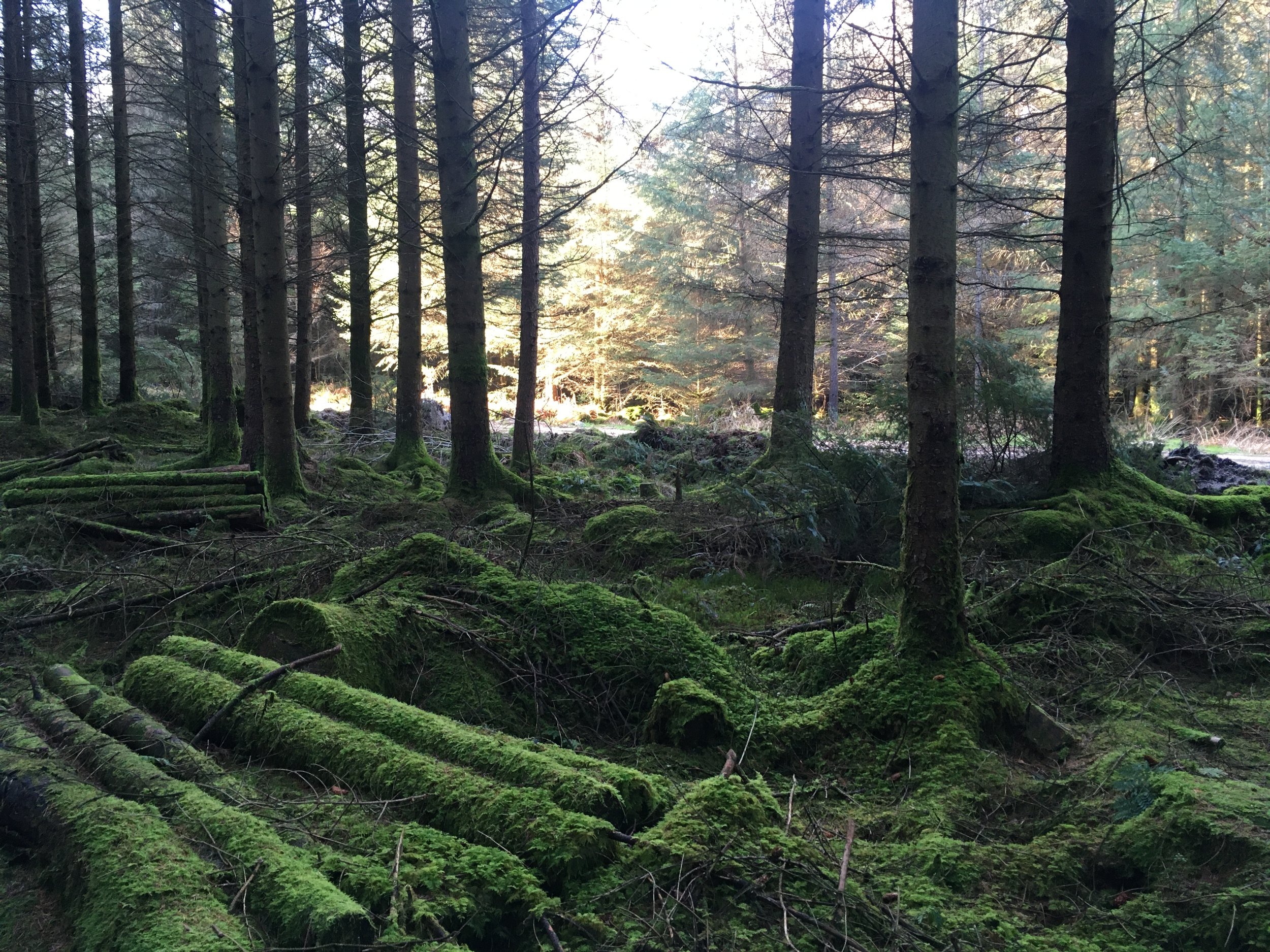Life after death: The importance of deadwood in our forests
Left deadwood as part of continuous cover forestry (CCF) in Dumfries, Scotland. Source: Neil Insh
Deadwood may not be a term many people are familiar with, yet it is absolutely vital to the ecosystems we all depend on to live. This is especially true for our dwindling but invaluable areas of intact UK forest. “Deadwood” simply refers to the gradual decomposition of wood within the environment, which can be observed in many forest structures. Anything from a small fallen stick to an old decaying tree stump has incredible value to both the observable diversity we enjoy and imperceptible chemical reactions beneath the surface.
Deadwood can accumulate in trees and on the ground, in turn providing opportunities for arboreal species and epiphytes (plants that develop on other plants, usually found in ancient woodland.) This state of gradual decay can occur through processes such as environmental erosion and foraging animals; however, the most integral group of unsung heroes are known as ‘detritivores’ and ‘decomposers’ - the microspecies that are essential for the health of our forests.
Meloe violaceus, the violet oil beetle - a UK Biodiversity Action Plan priority species. Source: Neil Insh
Detritivores are a wide group of species that obtain their nutrients from decaying matter (predominantly deadwood) and are crucial to the functioning of a healthy forest. Examples of detritivores include worms, millipedes, beetles, flies, and many other overlooked critters travelling through the undergrowth. Not only do they clear up the forest and allow new plant growth, but they are a vital food source for larger species - including hedgehogs, badgers, small birds, frogs, lizards - and many more in a seemingly endless list.
Decomposers complete a similar task but in a different way - breaking down decaying material through biochemical reactions instead of internal digestion. Fungi and bacteria are the most common decomposers and are equally important as a food source and a key contributor to the decomposition cycle. This term refers to the movement of nutrients and energy from decomposing matter - such as deadwood - to be regenerated back into the local ecosystem. Moreover, fungi are essential for absorbing fossil fuel emissions (up to a third of all emissions).
The movement of nutrients (such as nitrates and phosphates) back into the soil is a catalyst for new plant growth and is crucial to all healthy plants and animals. Without this renewal by detritivores and decomposers, the soil would become poor and uninhabitable for most of our UK woodland residents. If deadwood is cleared and disposed of separately from the area it fell, it takes with it some of the energy and mineral value required by that ecosystem. This in turn reduces the ability for new plant growth and minimises diversity as the hardier plants naturally outcompete the others.
The decrease in fungi abundance also reduces the vast interconnected nutrient networks that all trees depend on. Soil with diminished worm populations is less oxygenated, has less stability, and is less fertile for farming, with wider implications for food security. There are countless knock-on effects created by a lack of deadwood that is often difficult to recognise until an area has already been significantly damaged. These imperceptible cascades can start with disruptions to conditions above or below the ground but can be controlled and even reversed over time.
Fallen deadwood - a haven for wildlife and biodiversity. Source:
ClickAbout @clickabout / Unsplash.
One key aspect of this is allowing the natural processes of deadwood decay to occur undisturbed - fallen wood is eventually completely broken down and the process helps facilitate a new generation of species to develop. This is a concept at the forefront of the 9Trees vision for a healthy forest. Not only do we prioritise existing biodiverse areas such as peat lands (an incredibly vital habitat for detritivores and decomposers) but we regularly return to manage the planted areas.
This includes monitoring deadwood abundance and diversity on-site. This level of care far exceeds many mandated reforestation schemes without adequate biodiversity monitoring and regular reviews on forest progression. A healthy woodland is not just about getting trees to grow, and 9Trees brings together all apparent and obscure factors to ensure a healthy ecosystem for both humans and our millipede heroes.
Further reading:
#ForestEcology #Biodiversity #Conservation
By George Havill - Researcher at LuiKotale Bonobo project



